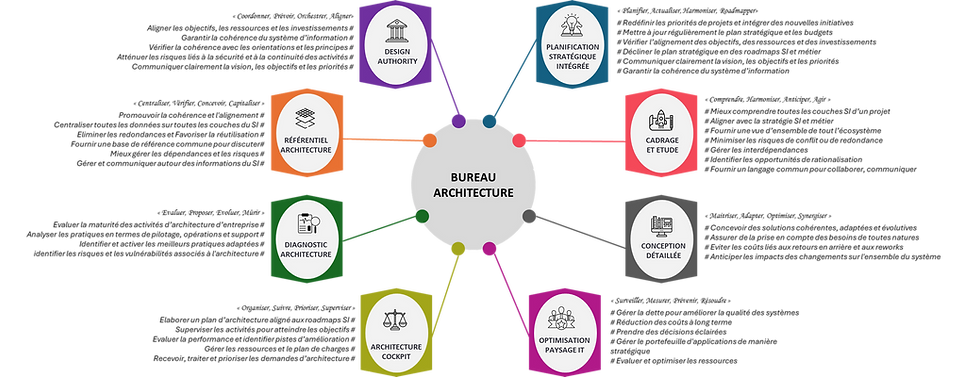AI in business: everyone's talking about it, no one knows where to start
- Gabriel Amine Ghalleb
- Jun 17
- 9 min read
Why so much confusion around AI in business?
Artificial intelligence is on everyone's lips in executive committees. Since the meteoric rise of generative AI like ChatGPT, the pressure is mounting to "do AI" and not miss the boat. Yet, many organizations remain hesitant and don't know where to start. First, there's a problem of media hype : AI is everywhere, presented as the solution to everything, which leaves teams overwhelmed or poorly informed about the real possibilities . There's a real fear of blindly investing in a poorly understood field, with constantly evolving technologies . In this context, it's difficult to distinguish between a passing fad and a concrete opportunity for your company .
Furthermore, the reality of AI projects already launched is mixed. Behind the enthusiasm, many pilots are stalling. A recent study showed that more than half of companies remain stuck at the proof of concept stage and struggle to move to industrial scale . There are many practical obstacles: poorly organized data, underestimated costs, security issues, etc. As a result, the return on investment (ROI) of AI often remains unclear, which discourages people from going further . In short, everyone is talking about it , but confusion reigns over how to actually take action.

Gadget or strategic tool? "Do as the others do"
Faced with this hubbub, a common temptation is to launch a flashy "AI" project that is disconnected from real needs – gimmicky AI . For example, deploying a basic chatbot on your website for show, while no customer service strategy is defined behind it. It is not enough for a tool to be labeled AI for it to create value . On the contrary, an AI that is not aligned with business processes risks running on empty.
It is therefore crucial to differentiate between a gimmicky experiment and a useful application of AI. An AI is only of interest if it serves a clear business objective (increasing sales, improving the customer experience, optimizing an internal operation, etc.) or solves an identified problem. Moreover, we observe that the most mature companies now favor pragmatic and concrete use cases rather than futuristic chimeras. For example, more than half of large companies plan to focus in 2025 on proven uses such as predictive maintenance or customer personalization , a sign that AI is not just about fads: it can offer immediate and tangible results . In other words, goodbye to buzz for the sake of buzz : AI must be treated as a business lever in its own right. Welcoming AI beyond the isolated gadget means triggering a real transformation of the organization. Successful companies are those that move from simple laboratory experimentation to large-scale integration, with a view to sustainable transformation .
Ask yourself the right questions before you start
How to identify the right starting points ? The first step is to return to business fundamentals . To avoid the gimmick effect, it is necessary to clarify for whom and for what purpose we are considering AI. Who will use or benefit from this AI? Is it to help customer advisors, operational managers, the HR team? Which tasks or processes should be targeted as a priority? For example, will we automate CV sorting, assist finance staff in detecting anomalies, or help salespeople with lead scoring? These questions require us to identify the concrete needs of each department and the expected gains . An effective way is to identify, with each business department, their current pain points and imagine how AI could resolve them or alleviate constraints .
Next, it's important to consider the organizational impact . Introducing AI isn't just about installing another piece of software: it will potentially change processes and lead to the evolution of certain roles . For example, automating a previously manual task will free up human time... which will need to be redirected to higher-value missions. Employees will have to adapt to working with AI on a daily basis. Will their job change? What new skills will be required? It's proven that AI can have a profound impact on employees by changing their tasks and the skills needed. It's therefore important to anticipate change support : training, communication, and team involvement upstream, to allay fears and encourage buy-in. Another key question: is your data ready? Without quality, accessible data, there's no effective AI—we'll come back to this. In short, embarking on AI requires real upfront thought about the why and how , well beyond simply choosing a technology. As one expert points out, before adopting a new AI solution, it is essential to understand what specific need it meets (for example, improving operational efficiency, reducing costs or enriching the customer experience) instead of succumbing to the latest fad.
Concrete use cases from the back office to the front office
To clear up the confusion, there's nothing like a few concrete examples of what AI can bring. There are roughly two main areas of application: internal functions (back office) and customer- or business-oriented professions (front office) .
Back-office (support functions) – AI helps automate and make many internal processes more reliable. In human resources , it can sort resumes in the blink of an eye or answer common employee questions via a virtual assistant . In finance , it detects fraud and accounting anomalies, and improves the quality and traceability of financial data. In legal departments , it sifts through large contracts to extract key clauses or verify compliance. In IT , AI strengthens cybersecurity by spotting suspicious behavior, assists IT support with technical chatbots, and even helps developers (we talk about generative AI, like a programming co-pilot). All these applications aim to increase the operational efficiency of support functions.
Front-office (customer-facing professions) – Here, AI acts as an accelerator for customer relations and value creation. In customer relations/customer service , chatbots and conversational assistants handle common requests 24/7, improving responsiveness while freeing up teams. In marketing , AI enables hyper-personalized campaigns: fine segmentation, targeted product recommendations, creation of tailored content in one click. More than half of marketers already use AI for tasks such as translation or visual generation, and around a third use it to personalize customer communications. On the product side , AI analyzes usage data and customer feedback to guide innovation (for example, prioritizing features to develop). Finally, for sales , machine learning algorithms can estimate the most promising leads, predict purchasing behaviors or optimize pricing.
These use cases show that AI can be relevant wherever there is data and an improvable process . The important thing is to target areas where it provides a clear benefit (time savings, better decision-making, enriched experience) rather than scattering it around aimlessly. Each use case must be guided by a specific business purpose.

Where to start? From strategic vision to first projects
Faced with the multitude of possibilities, what roadmap should be adopted to introduce AI? The key is not to give in to haste . There is no point in launching ten pilot projects all over the place or buying the latest "trendy" AI solution without an overall plan. You must first develop a clear vision of AI in the company . In other words, define the role that AI will have to play to serve the organization's strategy. This requires true strategic alignment : AI must be seen as a lever for transformation consistent with the company's long-term objectives. It is therefore recommended to start with business objectives (increasing customer satisfaction, increasing productivity, opening a new service, etc.) and to identify priority AI use cases . This framing step must be done hand in hand with business departments : they are the ones who carry the operational needs and can sponsor projects if they see an interest in them. As such, it is crucial that the AI topic is not confined to the IT department: it must be taken to the highest level as a cross-company project.
Once the vision has been established and the opportunities identified, it is time to take action in a pragmatic and iterative manner . Start small, but think big . It is often advisable to launch a pilot project on a specific use case, to learn and demonstrate the value in the field. Choose a first application case where the business impact can be measured relatively quickly, while being achievable with the available data and resources. This could be, for example, the automation of a manual back-office task, or an AI assistant for salespeople on a range of products. The objective is to achieve quick wins that lend credibility to the approach, while gaining experience (technical, organizational, ethical, etc.) before expanding on a larger scale.
Adopt an agile approach at scale : test, learn, adjust, then gradually expand the scope. This culture of experimentation must be encouraged internally, which means training teams and promoting initiatives. At the same time, stay focused on the long term: it would be counterproductive to seek immediate ROI at all costs. Companies obsessed with quick returns risk jeopardizing their future gains by abandoning promising projects too early. It's better to accept that investment and iteration are necessary to reap the benefits of AI over the long term.
In summary, a successful AI strategy will rest on a few pillars : a solid business vision, patient but determined investments, close collaboration between IT and business teams, and phased execution with continuous improvement.
Integrating AI into the IS: data architecture and governance
Adopting AI isn't just about plugging a magic bullet into your organization. It also requires technically integrating these new capabilities into your information system (IS) and existing processes. In concrete terms, this raises two major challenges: where to place AI in your workflows, and how to do so safely and effectively.
On the one hand, it's about identifying the integration points of AI in your applications and processes. For example, will AI be added to your CRM to score leads? Will it be integrated into your ERP to optimize the supply chain? Or will it intervene upstream, via a cross-functional data analysis tool? This architectural reflection is important so that AI is embedded in the right place in the business process, where it can act effectively without creating too much disruption. Often, we choose to augment an existing process rather than reinvent it entirely: for example, adding an AI module that gives recommendations to operational staff, rather than attempting to automate end-to-end from day one.
On the other hand, prepare your technical base and your data . All AI is based on data : if your data is scattered, of poor quality or outdated, the algorithms will give mediocre results. A saying goes "garbage in, garbage out" . So first ensure the quality, availability and relevance of your data . Incomplete or biased data risks creating algorithmic biases and distorting decisions. A cleaning, consolidation and possibly collection of new data may be necessary beforehand.
Another technical pillar: IT infrastructure . Some AI applications consume a lot of computing resources: can you host them, or will you have to go through the cloud? Do you have the right software tools to develop, test, and deploy models? Here again, nearly a quarter of organizations point to the lack of adequate IT resources as a hindrance. It's better to know this from the start to avoid unpleasant surprises.
Finally, we must not neglect the governance of tools and data . Introducing AI implies new responsibilities: how to ensure that models are used ethically and compliantly? Who validates automated decisions? How to control risks (bias, errors) and security ? The protection of sensitive data must remain a priority: if AI handles customer or HR data, confidentiality and cybersecurity rules must be strictly applied to avoid leaks or abuse.
In short, integrating AI into your information system must be done in a serious and governed manner , and not in an improvised hackathon mode. The foundations (data, infrastructure, security) are just as important as the visible use cases. This is the price to pay for AI to truly infuse your processes reliably.
A lever for transformation above all: a question of leadership
Ultimately, talking about AI in business means talking about transformation . This topic goes far beyond the technological dimension. Successfully adopting artificial intelligence is, above all, about demonstrating a posture of enlightened leadership . Executives and IT departments must carry the vision, provide the impetus, and support the change. It's not about blindly delegating decisions to algorithms or hoping for a magic wand. It's about using AI as a catalyst to rethink certain operating methods, gain collective intelligence and improve performance. When used well, AI becomes an accelerator of innovation and a tool for boosting human creativity, not an enemy of managers. It can profoundly transform management and decision-making processes, and even positively impact human resources by automating low-value tasks and freeing up time for talent development.
But this will only happen if leaders are actively involved. AI isn't a purely technical project to be handed off to IT teams—it's a business project . It's up to leaders to define an ambitious but realistic vision, instill a data/AI culture in the organization, and create an environment where employees and AI can collaborate effectively. This involves education (demystifying what AI is and isn't), ethics (setting a framework for responsible AI), and managerial courage to push the boundaries when necessary.
In short, AI must be approached not as a mere tool , but as a lever for sustainable business transformation —and it's up to leaders to lead the way. Those who adopt this stance will leverage AI to transform their organizations, while others risk remaining spectators to the change. So, are you ready to make AI a true business project, driving transformation, rather than just another buzzword? The debate is open.




Comments